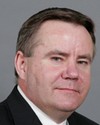I'm going to have trouble remembering what they all are.
The earlier one was about why a very wealthy person gets a hearing aid and another person is denied it just because of an income line. One of the problems of history is that it provides two gates into health care. One is a pension gate. If you're disabled as a result of military service, you'll get health care for that injury or ailment no matter what your income is. It's not a function of income; it's a function of compensation for an injury.
The other case is that of someone with a low income, when you served overseas and you have a low income. This is where the second individual probably falls. There are real disadvantages to that. We acknowledge that. We have been, as part of the health review, kind of looking at ways in which we might overcome that.
One thing we can say is that at least those to whom the greatest debt is owed--that is people who actually have war or military service injuries--and those who don't have the means at all to help themselves are covered.




